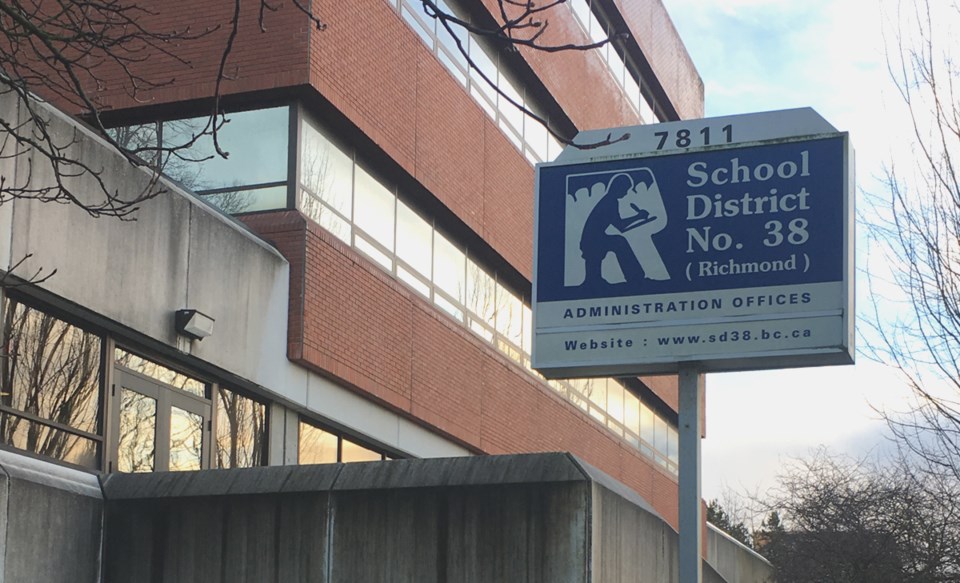Despite enrolment creeping up in the Richmond school district, thousands of surplus seats are still projected by 2033.
Furthermore, enrolment increases are expected in certain areas, such as the city centre and Hamilton, but not evenly throughout Richmond, which currently has 5,000 empty school seats.
The figures became clear as the district released background documents on its long-range facilities plan last week, with plans to release the draft of the entire document March 13.
The district will consult with the public via open houses, meetings and surveys. The final plan is scheduled to be back in front of the school board in June.
Chair Ken Hamaguchi said the board will be involved in the public consultation process. But, he noted, not much has changed since the last facilities review, although enrolment has increased slightly.
The provincial government has committed, however, to upgrading schools to make them safe, he added.
"We're expecting our schools to get fixed but they're not going to just hand over the money," he said. "You have to be able to justify what you're doing."
The background documents don't give any recommendations for school closures, but there is a note that, if there is a need for "consolidate space," the process could begin as early as September.
A recommendation from last summer suggested looking at schools for possible "amalgamation" to "reduce District capacity."
The background documents, available online at SD38. bc.ca, give information about school programs, catchment areas, school populations and school utilization rates.
It also gives information about risk of damage and liquefaction in the event of an earthquake.
School utilizations rates are calculated by looking at the number of classrooms in the school and the number of students. Currently, seven elementary schools are close to or above 100 per cent full - Blair, Cook, Garden City, Homma, Spul'u'kwuks, Whiteside and Wowk.
Schools with the smallest populations are Sea Island, Grauer and Woodward.
Of the 10 high schools, only McMath and Richmond Secondary are close to being 100 per cent full. Cambie and Palmer are at about 50 per cent.
The report also lists the ages of the schools, with the average age of schools in Richmond at 32.66 years. Elementary schools are somewhat older, with the average age at 38.5 years and secondary schools at 26.4 years.
Calculations for school age are done by taking into consideration new and old areas - Brighouse elementary, for example, is listed at being 16.4 years old, but most of the school was rebuilt and opened in 2011, making it eight years old.
However, using a formula to take into consideration its gym, built in 1965, its "normalized age" is 16.4.



